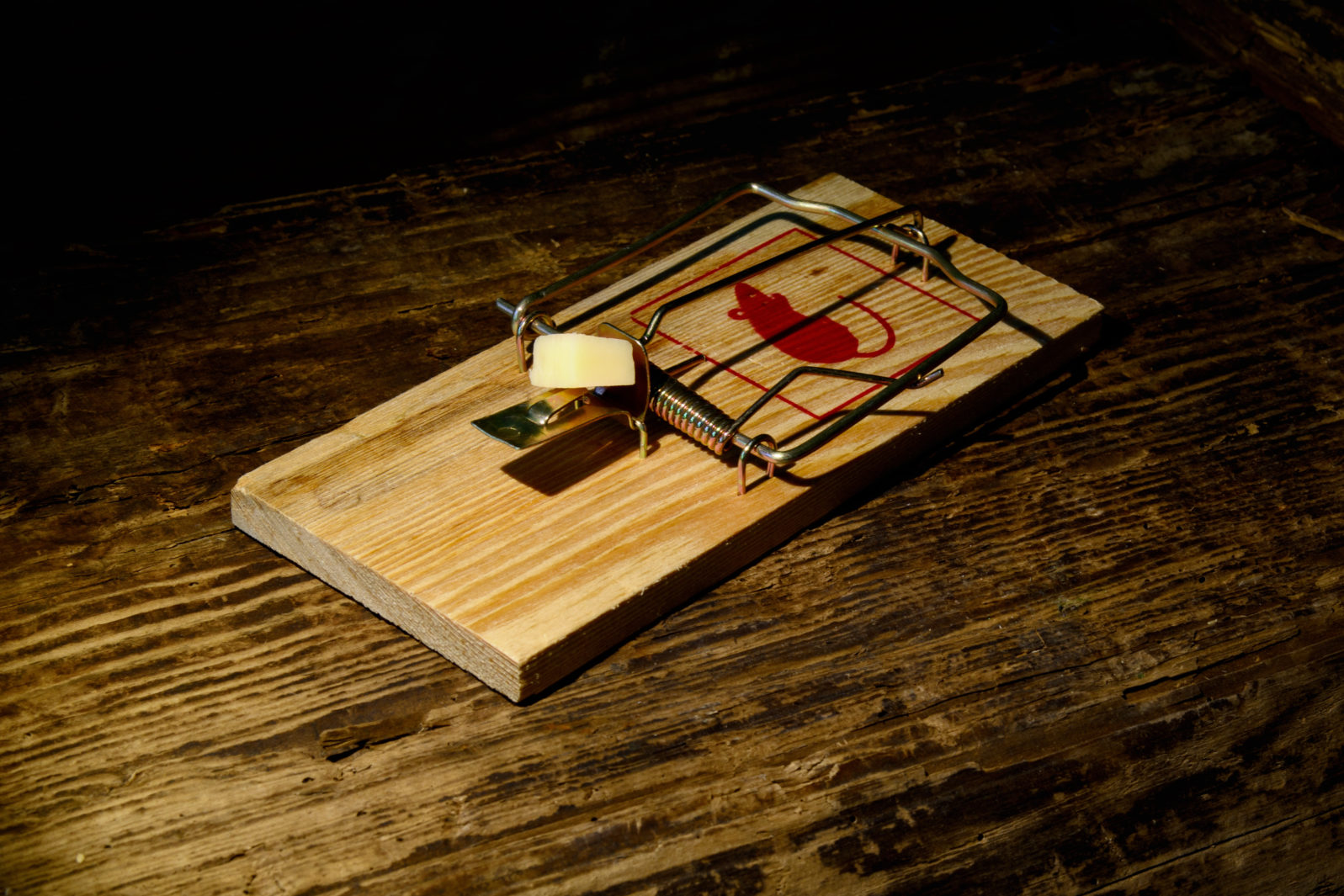How Neuroscience Disproved Free Will and Then Proved It Again
In this excerpt from Minding the Brain (2023), neuroscientist Cristi L. S. Cooper discusses the discovery of “free won’t” — the decision NOT to do somethingHere are some excerpts from “Free Will, Free Won’t, and What the Libet Experiments Don’t Tell Us,” Chapter 14 of Minding the Brain (Discovery Institute Press, 2023) by neuroscientist and educator Cristi L. S. Cooper, on the way in which pop science makes it sound as though neuroscience has almost disproven free will. No such thing.
2. The Neuroscience of Free Will
Neuroscientists have been interested in finding the neural correlates of the will for a very long time, probably since the very beginning of brain research. The idea that the will could entirely be localized in brain tissue is something that philosophers, psychologists, and neuroscientists have debated for years, and I will not attempt to summarize the state of the debate in this chapter as it is well done elsewhere. However, the findings of a pioneering study in the field in 1983 on the readiness potential (RP) by Benjamin Libet were interpreted at the time to support free-will skepticism (the idea that free will doesn’t exist) and gave rise to an entire field of experimental investigations that continue to the present day.

Some go so far as to say that his study and subsequent studies prove that free will does not exist at all—that our decisions are entirely initiated and controlled by the matter of our brain. Others believe that too much has been made of this study and that further experimentation has left the question of the nature of free will wide open. Either way, Libet’s experiments are so foundational to the “neuroscience of free will” that nearly every review of the subject begins with a description of his work. A 2021 review by Aaron Schurger et al. drove this point home: “It is difficult to overstate the degree to which the conclusions of Libet’s papers on the RP have permeated the intellectual zeitgeist.” In the following pages, we will take a close look at the 1983 study; then we will look at studies that have been done in the past forty years that examine various components of the initial experimental paradigm; and, finally, I discuss the current state of the Libet-style of free will studies.
3. The 1983 Study
Before the time of Libet et al.’s 1983 study, German scientists had recorded an interesting and reproducible change in brain potential in the time immediately preceding a voluntary muscle movement.4 Specifically, through electroencephalographic (EEG) recordings, they observed a slowly increasing surface-negative cortical potential leading up to voluntary muscle movement that begins up to 1–1.5 seconds before the movement. They called this the Bereitschaftspotential or the “readiness-potential” (RP). Given the relatively long time of the RP, an intention to act has already been initiated. Libet et al. were interested in the question of whether conscious awareness of the urge or intention to act also appears with similar timings.
To address this question, Libet et al. devised a novel strategy for studying voluntary movements and the intention or will to make those movements. Subjects were asked to voluntarily and spontaneously move their fingers or wrists of their right hands whenever they freely wanted to do so. At the same time, they also were asked to note the position of a spot of light traveling around in a circle on a screen—its “clock-position”—when they were first aware of an urge to move. By doing this, the experience of the timing of the awareness (= time “W” for the “wanting” or “will” or intending to act) was turned into a visually related spatial image, similar to reading and recalling the clock-time for any experience. Subjects were also asked to report their awareness of “actually moving,” which they called “M.” During the experiment, an electroencephalogram (EEG) measured electric field potentials and an electromyogram (EMG) recorded activated muscle in the arm. Using all of this information, Libet et al. then related the time of the onset of the readiness potential (RP) to the time of the awareness of the urge to move (W), the awareness of moving (M) and the actual movement itself (as recorded by the EMG).
If conscious (or free) will were to be in control of producing a movement, then one would expect time W to exist before, or at the onset, of the RP in order to command the brain to perform the desired act. However, Libet et al. found that the negative shift in RP began before the corresponding W value by an average of 350 milliseconds (ms). They interpreted this to mean that the brain initiates a voluntary, spontaneous movement unconsciously, before there is any (at least recallable) subjective awareness that an intention to act has already been initiated. This finding kicked off the next forty years, up to the present day, of scientists referring to the Libet experiment as being the seminal experiment in the field that showed that there is no
free will.
4. Free Won’t
Interestingly, this was not necessarily Libet’s own interpretation after more years of study, as summarized by himself in 1999. This was due, in part, to a series of experiments that began with a finding made during the 1983 study. The scientists noted that after time W, there was another 150–200 ms before the beginning of the movement as signaled by the EMG. The authors suggested that this might be sufficient time for a conscious veto. While the study’s major finding led researchers to believe that voluntary movements are unconsciously dictated by the brain before a subject has any awareness of a “wanting” or will to move, subjects indicated that periodically throughout the experiment there were times when they decided not to move at the last moment. Consciously changing one’s mind had not been evaluated due to the experimental set-up—the lack of a movement in this case resulted in the absence of a trigger to record any RP that may have preceded the subject’s veto. Therefore, there was no way to ask whether the RP preceded a movement that would end up being vetoed later.

However, in follow-up experiments, the final decision to act could still be consciously controlled during the approximately 150 ms after awareness of conscious intention (W) appeared. Subjects could “veto” motor acts during a 100–200 ms time period before an intended time to move.
Reflecting on these results in 1999, Libet wrote, “The conscious veto may not require or be the direct result of preceding unconscious processes. The conscious veto is a control function, different from simply becoming aware of the wish to act.” What did he mean by this? His explanation rests on a distinction between the awareness of the decision to veto and the content of that awareness:
The possibility is not excluded that factors, on which the decision to veto (control) is based, do develop by unconscious processes that precede the veto. However, the conscious decision to veto could still be made without direct specification for that decision by the preceding unconscious processes. That is, one could consciously accept or reject the programme offered up by the whole array of preceding brain processes. The awareness of the decision to veto could be thought to require preceding unconscious processes, but the content of that awareness (the actual decision to veto) is a separate feature that need not have the same requirement.
5. The Readiness Potential
In the time since Libet’s 1983 study, scientists have interrogated the readiness potential to better understand exactly what it is. …
7. Where the Libet Paradigm Stands
After scientific interrogation of the Libet experimental paradigm over the last forty years, scientists know much more about the readiness potential and the moment of conscious will but don’t seem any closer to agreeing as to the significance of many aspects of the original findings. To summarize the experiments described here, the readiness potential that was first described by Libet as being an upstream, unconscious causal signal for initiation and invocation of conscious will has been cited for years as being the key evidence that unconscious brain states cause conscious will. This study has been taken to be the key neuroscientific evidence that we truly don’t have free will. Libet himself later came to believe that the readiness potential may start a specific voluntary action, but that the conscious will controls volitional outcome (what some have called “Free Won’t”).
Experiments show that the readiness potential (RP) does not co-vary with the will (W) to act, ruling out a causal role of the RP on W, and that a decision to move does not cause a larger EEG negativity compared with a decision to not move, indicating that it must not be associated with preparation for movement at all. In hypnotic patients, the readiness potential is associated with preparing to move even when patients have no desire or will to move, indicating that the RP is independent of processes associated with a conscious will. Interestingly, pre-movement EEG shifts disappear when subjects don’t watch a clock, calling into question the role that watching a clock plays in the Libet results. W, or the moment someone feels a “will” or “wanting” to make a movement seems to be unaffected by having a choice, which seems counterintuitive. Lastly, W can also be manipulated after it occurs, calling its significance into question.
The studies described here constitute just a handful of the studies that call into question the significance of the Libet findings on the free will question. This is significant and important considering that, at the popular level, non-neuroscientists use Libet’s studies to support a deterministic view of the mind.
Indeed, although the vast majority of neuroscientists believe in a deterministic view of free will, many of them do not believe that Libet’s experiment can be shown to do away with free will. In a useful review in the journal Neuroethics, Andrea Lavazza and Mario De Caro provide examples of conceptual confusion surrounding neuroscientific studies on human agency. Their conclusion is spot-on: “Our aim here has only been to suggest that, when one comes to the issue of human agency, great caution should be used before drawing bold philosophical, political and social conclusions from neurological findings, whose correct interpretation and value are still extremely controversial.” This is the aim of this chapter, too.
They add that there are “plenty of excellent reasons for believing that neurobiology will continue to enrich our understanding of many features of the human mind, but there are no good reasons for thinking that it is going to fully explain them all.” Neuroscience has told and will continue to tell us much about the brain as the organ that carries out the actions of the mind, and we have to continue to have conversations about what the science means. The scientists would do well to remain open to philosophical considerations that span the spectrum of thought on free will and, likewise, the philosophers would be wise to ground their ideas in what has been demonstrated regarding the human brain and body.
Note: We provided some background for the conflict in neuroscience that Cooper addresses here late last year.
